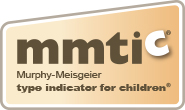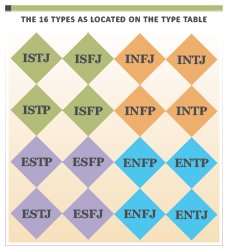New Possibilities for Teaching: Type in the Classroom (Research Series – NC Part 2)
In this Research Series of articles, focusing on type In the Classroom, we are highlighting studies that are useful to all of us who work with the MMTIC® system. This first project, in the series, is a large two-year study at Combs Magnet Elementary in Raleigh, North Carolina, where the MMTIC instrument and system were comprehensively incorporated into the school system. In the previous article, Part 1, we introduced the mixed methods research study conducted by the Friday Institute for Educational Innovation, North Carolina State University, in collaboration with Dr. Elizabeth Murphy, and CAPT. In this second article, Combs-Part 2, we are discussing the impact to teachers as type was incorporated into the classroom. (Follow this link to read Part 3 in this series.)
The study at Combs Elementary was complex and multi-layered. It began with two days of interactive training by Dr. Elizabeth Murphy, co-author of the Murphy-Meisgeier Type Indicator for Children®, where the third-grade teachers received instruction on how to work with psychological type in children and how to incorporate knowledge of type into the classroom. Dr. Murphy further provided monthly coaching sessions with the teachers and weekly emails with suggestions on how to apply type in lesson plans and communication. The third-grade teachers applied type theory into instructional practices through:
- Z-model decision making process
- Modifying assignments and assessments
- Offering choices (on how to complete assignments) based on type preferences
- Using language respecting type preferences
Researchers at the Friday Institute gathered data through teacher surveys (Professional Development and Impact surveys), focus groups with teachers, and ethnographic observations in the classroom and during teacher planning periods. The outcomes fell into four main groups:
- Developing type awareness
- Understanding and connecting with their students
- Working as a team
- Seeing new possibilities for assessing student learning
Developing Type Awareness
It may be stating the obvious, but a deep understanding of psychological type and how it can impact learning and behavior is an essential first step to incorporating type meaningfully into a classroom or school. Only with a sound awareness and knowledge of type can teachers truly begin to modify their instructional practices to respect type differences. As we referenced in the previous research article in this series, the teachers had eye-opening experiences of realizing that they tend to teach information in a manner that matches their own preferences, which likely do not match that of most of their students.
Understanding and Connecting with Students
One teacher stated, "I think this has helped me in better understanding how to interact with my students. It also helped me to understand why my students act in ways that they act." Developing a sound type awareness provided teachers with a deeper understanding of how their students learn and behave, which was especially insightful with regard to behavioral issues. The teachers agreed that the language of strengths (preferred type) and stretches (non-preferred type) used with the MMTIC was a useful way to talk with students not only about their preferences but specifically to lean into challenging areas. For example, one teacher noted that it "became easier to talk to kids about strengths and stretches [when] pushing them to do something they didn't want to." As will be discussed in the student outcomes in the next article of this series, the language of strengths and stretches from Dr. Murphy's work clearly resonated with students as well, encouraging them to challenge themselves.
Working as a Team
The impact of the study reached into an appreciation for the type differences among their fellow teachers. The third-grade teachers realized that their team included people with different type preferences. One teacher admitted that after learning about personality type, she realized that she has a Judging (planful, scheduled, decisive) preference and was avoiding working with teachers with a Perceiving (open-ended, flexible, adaptable) preference. But this teacher recognized that this difference meant that her coworker had unique strengths that made a stronger team. She reflected, "At first, I was a little hesitant to [work with her]. But now I realize she comes up with amazing out-of-the-box ideas that I can't even think of. We realize how we can build on our strengths, instead of just being like 'she's different from me, we don't do it.'"
Seeing New Possibilities for Assessing Student Learning
One of the most exciting outcomes with the teachers from the MMTIC initiative was that the teachers see greater possibility for assessing students in ways that allow them to show their mastery. Dr. Murphy first asked teachers to examine their existing assessments. Teachers had (another) "aha" moment when they realized that the majority of questions were oriented towards Sensing or Thinking preferences. Dr. Murphy guided them on how a small change in the framing of the question can bring it to appeal to Intuition and Feeling preferences. Teachers were struck by how a relatively simple change could potentially allow different students to draw on their strengths while maintaining the standards in the curriculum. One of the Combs administrators summed up the import of this practice by noting, "The implications for a child showing their gifts is far more likely to happen when teachers have an understanding that there's just not one way a child can show all that they know."
Whether we are working with a school system, teacher's professional development, or incorporating psychological type into a specific classroom, beginning with developing type awareness in the adults who work with and instruct the students is a crucial first step. A big lesson we learned through the MMTIC initiative at Combs Elementary was to take more time on this first stage and make sure all the teachers and administrators had a solid grounding in type before working with students. An innovative discovery in the study was that small changes in language attending to all type preferences can make assessments more inclusive and promote the ability for all students to express their knowledge. The impact of type on learning starts with the adults who work with children and impacts the adults as much as it does the students.



_thumb.png)












